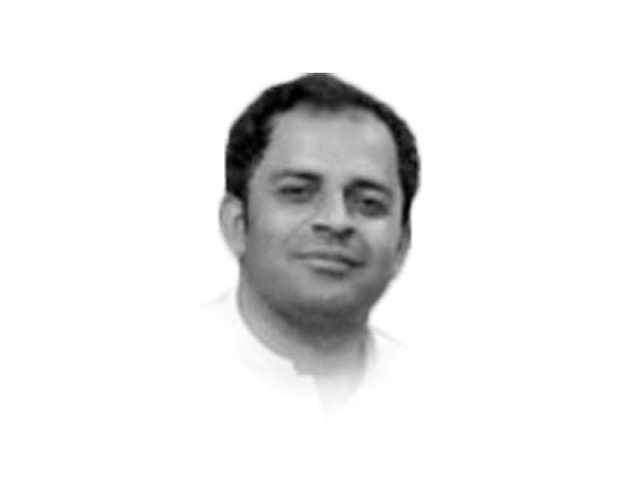Sindh: the sacred land
Sindh claims a distinctive historical, architectural, artistic, archaeological, mystical and aesthetic identity

The bountiful land of Sindh has always produced humanistic norms, altruistic customs, artistic values and finest humans. A province in the south-eastern part of Pakistan, Sindh claims a distinctive historical, architectural, artistic, archaeological, mystical and aesthetic identity. It takes pride in its glorious history, inclusive social fabric, diverse cultural outlook and secular tendencies. Hospitality, love, harmony, peace, secularism and tolerance have always been the defining features of the land. Moreover, it is also the home to a great number of Sufis, sages, saints, mystics, martyrs, mysteries, tales, legends and folklore.
The elegance of Sindhi culture is worth displaying. Marked on the first Sunday of December each year, Sindhi cultural day, also called Ekta or Unity Day, is celebrated by the local Sindhi people and the Sindhi diaspora living across the globe. The day aims at recalling and highlighting the cultural pluralism, abundant cultural heritage and mystical traditions of Sindh. It is commemorated with traditional fervour and warmth. Attired in traditional Sindhi dress, the jubilant people decorate the province from Karachi to Kashmore. Rallies, gatherings, mach kachahri (huddling around a fire for praising the cultural beauty), literary programmes and seminars are organised on this day. Sindhi folk singers, artists and dancers enthral the audience through their enchanting art.
From the citadel of Moen-Jo-Daro to the fertile Indus River’s basin and from the Kirthar mountains to the Rani Kot fort (also called the Great Wall of Sindh), the land reflects the rich civilisational, topographical and archaeological footprints. Ajrak and Sindhi Topi are symbols of honour, pride and respect. The designs of the patchwork of Rilli (traditional bedsheet) and the embroidery are the embodiment of the vibrant culture. Sughar and the traditional folk singers are the windows to historical and cultural accounts. The folk stories of Dodo Chanesar, the legend of Moriro Mirbahar, the telling tales of Watayo Faqeer and the epic characters of seven queens of Shah Bhittai’s poetry namely Marvi, Moomal, Lilan, Noori, Sorath, Sohni and Sassui add to Sindh’s cultural richness.
The roots of the humanistic and inclusive cultural outlook of Sindh can be jointly traced back to the Indus Valley Civilisation, inclusive demographic history, real Islamic traditions and the teachings of the great mystics and sages. As the bastion of one of the world’s earliest civilisations, Sindh has inherited some of the earliest dignified ideals and practices from the Indus Valley Civilisation. The diversified demographic history spanning millenniums has also helped evolve the exalted culture of inclusion and peaceful coexistence for many people regardless of cultural, historical, racial and ethnic affiliations. As Babul-Islam, i.e. the gateway to Islam, Sindh experienced glorious Islamic teachings. The great Sufi missionaries visiting Sindh in the early days of Islam had, through their piety and practices, left exalted humanistic values unparalleled in those days.
The indigenous saints and great poets have made invaluable contributions to shaping the psychological and social contour of Sindh. The Sindhi saints spread the message of love, peace, harmony and courage through their poetry and teachings. Shah Abdul Latif Bhittai, the soul of Sindh and the poet of people, is the synonym for Sindh. Bhittai had a special relation to the Sindh; the former lived to make the latter eternal, while the latter exists as an expression of the former. If Sham is to Tabraiz and Rumi is to Balkh; Bhittai is to Sindh. The great mystic Sachal Sarmast, the Martyr of Sindh Shah Inayat Shaheed, Herculean character of Hosh Muhammad Sheedi are the personalities Sindh owes a lasting debt.
Unfortunately, evil and toxic tendencies have been encroaching on cultural pluralism and tolerance for decades now. Epic misgovernance, the growing apathy towards genuine cultural values, and extremist tendencies threaten the glory the land experienced for centuries. There is, therefore, a need to reclaim the glory by arresting the retrogressive forces feeding on the social fabric of Sindh.
Published in The Express Tribune, December 4th, 2022.
Like Opinion & Editorial on Facebook, follow @ETOpEd on Twitter to receive all updates on all our daily pieces.












COMMENTS
Comments are moderated and generally will be posted if they are on-topic and not abusive.
For more information, please see our Comments FAQ